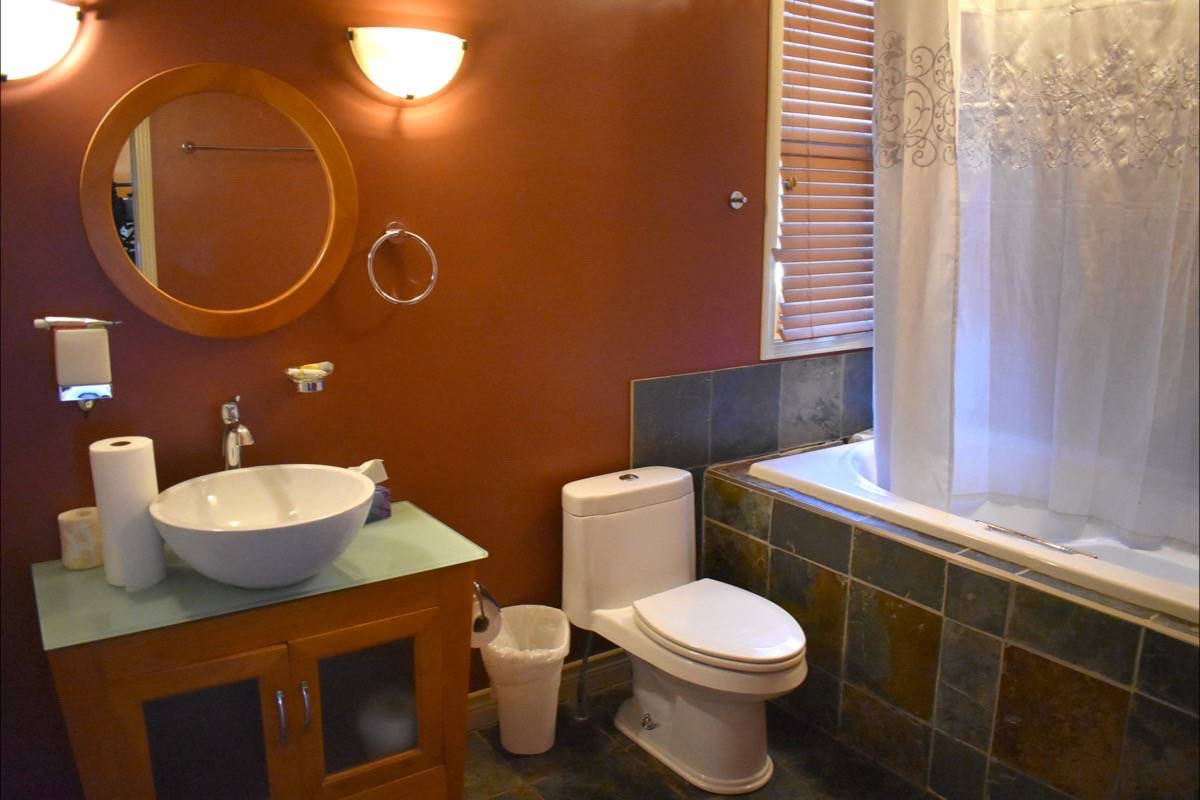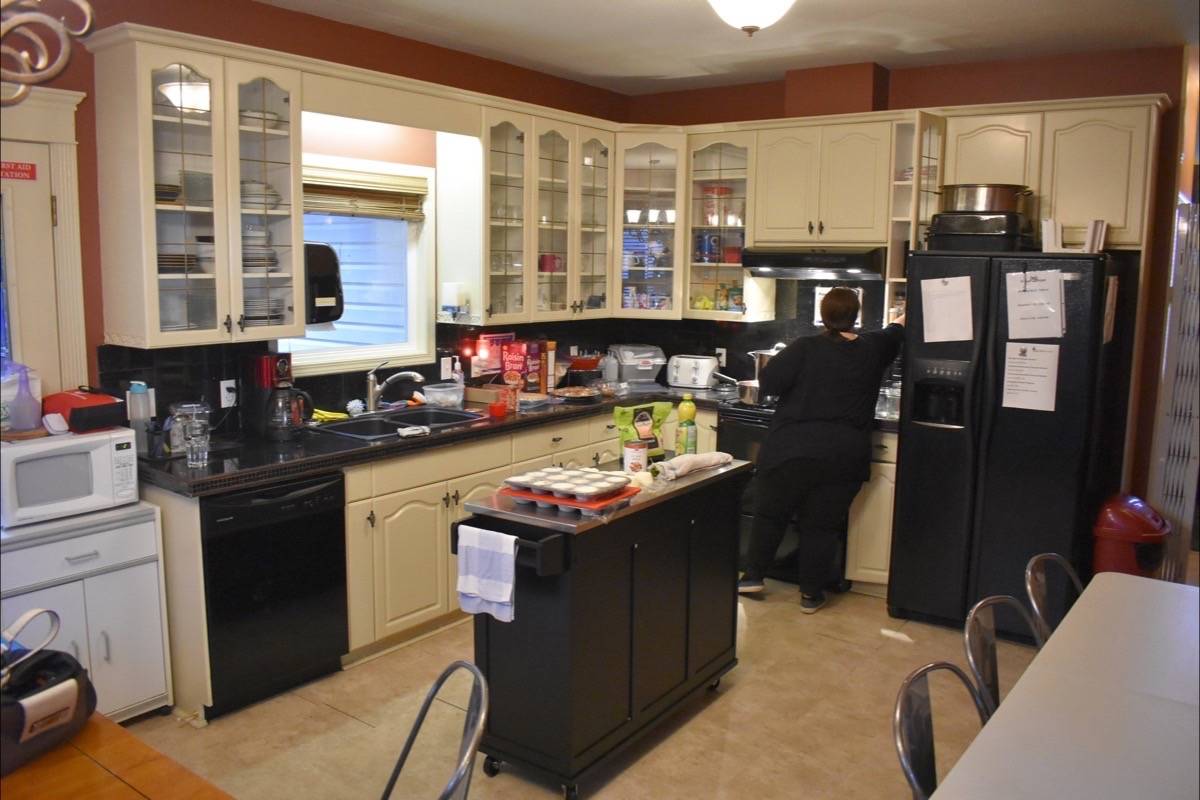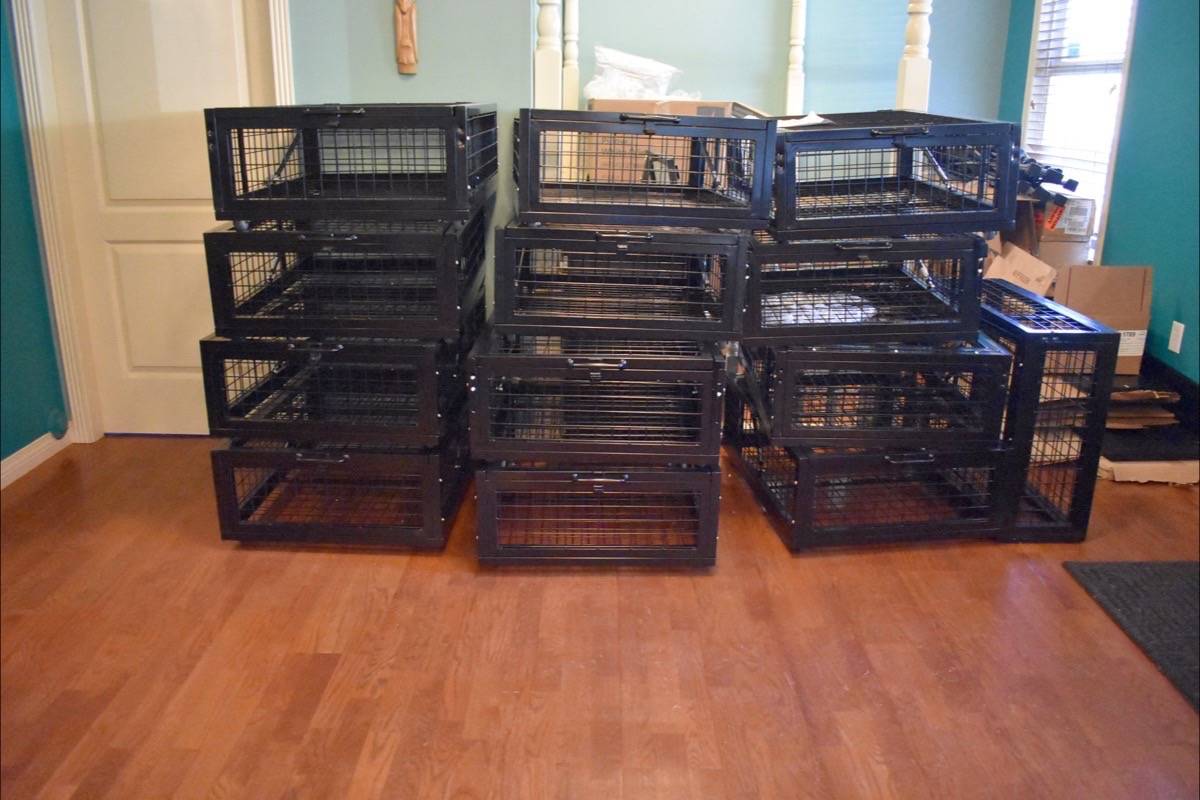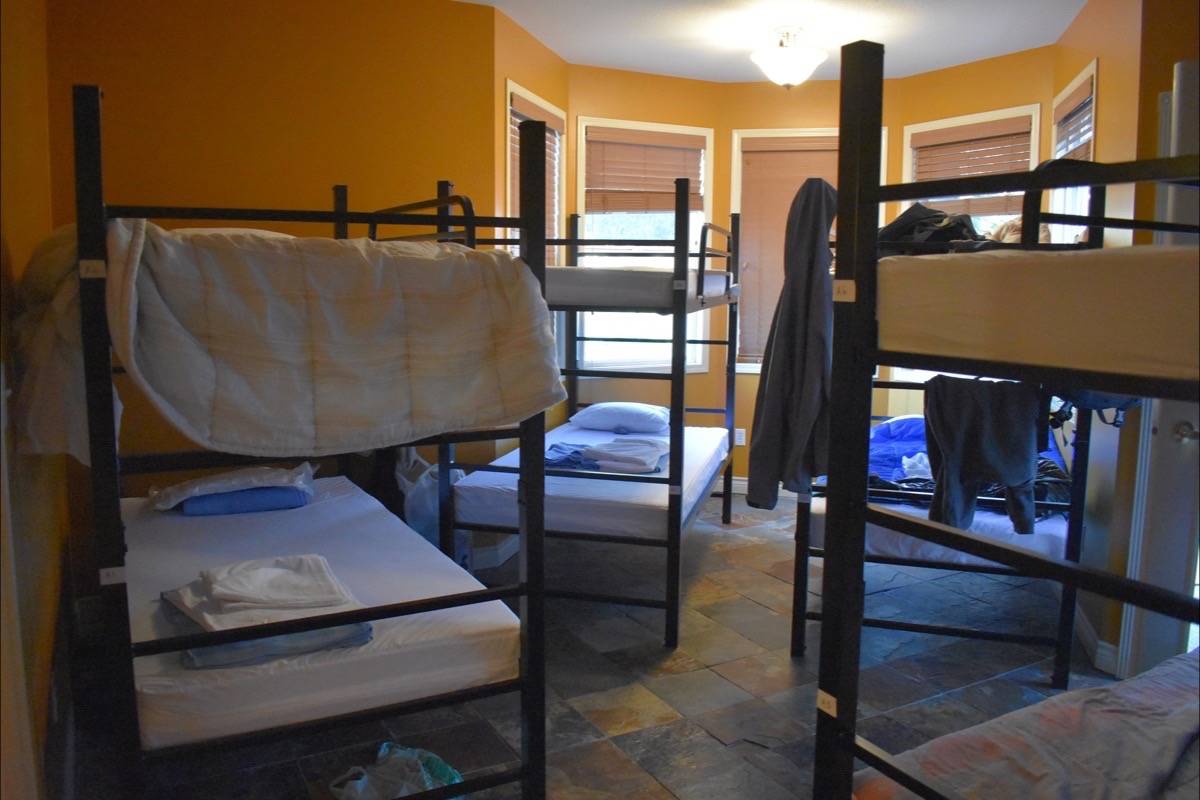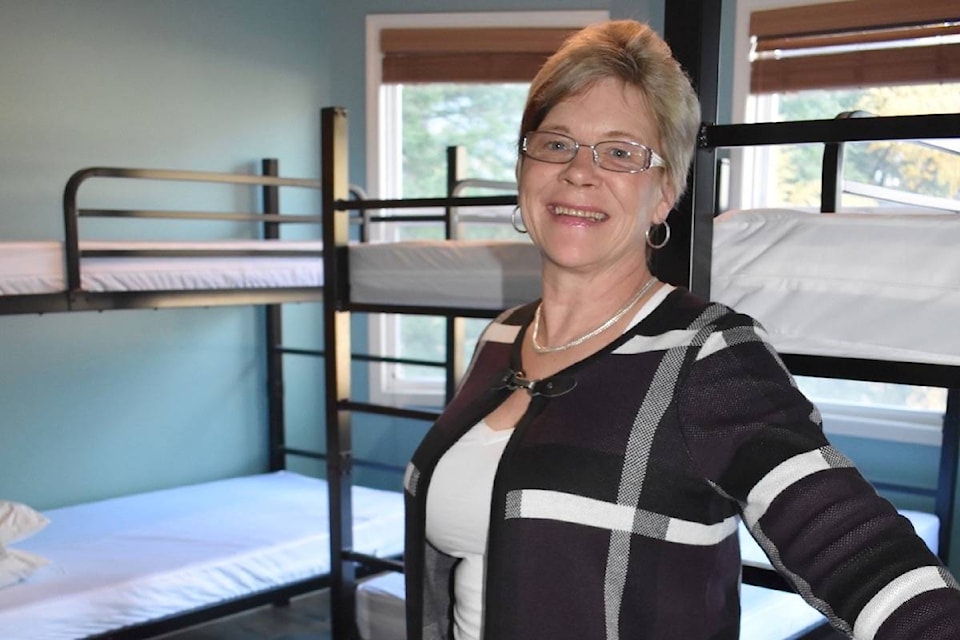A 20-bed emergency shelter opened in Hope Oct. 9. It is run by 12 emergency shelter staff, two of whom are on at any given time in the 24-hour shelter. Five extreme weather beds are also available at the shelter during winter months ‘but we don’t turn anyone away’ said Gerry Dyble.
The Hope Standard sat down with Dyble, executive director of the Hope and Area Transition Society (HATS) which operates the shelter, and shelter manager Sharon Holburn, to speak about the work of the shelter and who it serves as well as answer to some fears raised online about its opening.
Holburn comes to the shelter from Ruth and Naomi’s Mission in Chilliwack, where she worked with men, women, with managing staff and resident case planning. She also has a background in nursing and business management. Her personal experience of childhood abuse and later becoming a foster parent grew in her a dedication, in particular to helping women who are where she once was.
What exactly is an emergency shelter?
Gerry Dyble: Emergency shelter is, as defined by our contract with BC Housing, for those people who are chronically homeless, street entrenched, not able to maintain housing so they find themselves on the street. Typically with complex social challenges, mental health and addictions being the predominant issues.
Sharon Holburn: It could be as simplistic as job loss. People can have work one day, and most families live paycheque to paycheque and one day someone loses their job and they can’t pay their rent anymore and they are left on the street.
RELATED: 20-bed emergency shelter to open in Hope in October
There have been some fears raised, mainly on social media, that the shelter opening would attract people in need of services from other communities. What do you say to this?
GD: These people are already here…I think that if someone is homeless in Surrey, just because we’ve opened 20 beds in Hope doesn’t mean that they’re going to come from Surrey to Hope. They have their community and their culture already from where they’re at in Surrey, Abbotsford, Maple Ridge, Vancouver. They already have their community, their circle of friends, their resources in place.
We have enough people in our community who are living rough, living on the street, to house 20 people. But I am also saying that with 20 beds, we’re not going to solve homelessness in Hope.
We have folks who are…unhousable. So if we bring them in, we could fill up with unhousable individuals and now we’re just housing people and it’s no longer an emergency shelter. So we have to be very careful around who we’re bringing in, how we’re going to transition them into housing and so people will still see the same people on the street and go ‘well why isn’t HATS housing those people?’. It’s individuals that are hard to house or unhousable that we are maybe not going to be able to house.
Another fear was that the crime and drug rate could go up because of the shelter. What is your response to this?
GD: We want to be good neighbours and we want to ensure that we have ongoing relationships. If there is an issue, if something happens at Emil Anderson, we want them to come and tell us ‘something happened in our yard’. Not saying that it’s our folks, but so that we’re aware so we can address that situation.
I think that people need to recognize that we are a transient community. We have four intersecting highways. You can’t say that all crime is done by the homeless population.
SH: Part of having an emergency shelter is changing a person’s outlook. So when someone off the street comes in here, all of their needs are met. We don’t supply drugs, we don’t supply alcohol. All of their needs as human beings are met. They no longer have to steal for food, they don’t have to steal for hygiene or tampons or pads that they need or a razor that they might want, to shave their face and clean.
Everything is supplied here, so why would anyone think that the crime rate would go up because there is an emergency shelter? It does just the opposite. I’ve seen that in the seven years I’ve worked in Chilliwack, because of the fact that we provide services for people. They no longer have to worry about where their next meal is coming from or where they’re going to sleep that night or if they have a sleeping bag to keep them warm when it’s cold. All those things bring on theft.
GD: When Insite was opening up on the Downtown Eastside, they did some research and they’ve done some studies that actually, the crime in the area surrounding Insite had gone down and drug overdoses had gone down. Because they had a place to go to that was safe and supportive for them. I think that that’s the message out there, that just because you have a shelter that all of a sudden your crime rate is not going to go up.
SH: We’ve had the police go through the alleys, constantly, and they have never said something to us. They actually will stand and have conversations with our residents. Because they’re so happy with the changes. Because the police know everyone who comes here and so the police are beginning to see changes in people’s lives.
RELATED: Busy first month for Hope’s extreme weather shelter
Why was it important to have the shelter open 24/7 as opposed to most other shelters, which will get people to leave each morning and let them back in at night?
GD: I think because we don’t have the other resources that other communities have. We’re very limited in resources. For us, we had nothing, and I mean it’s very public it’s very visual when they’re out on the street here in Hope.
How long will people stay here?
SH: Well if you look at the housing situation anywhere, in Chilliwack or in Surrey or in Hope for that matter, it’s all a matter of time before housing becomes available to people who can afford it, who can live there, who can manage on their own.
As they come in we begin their case plan, they’ll be with us as long as we’re working on their case plan. So that could be a month, it could be three months, it could be six months. We are never sure because each person that comes in is an individual.
GD: And so long as they’re showing up in their life and they’re working their case plan, and they’re abiding by the policies and the practices of the house.
What if they’re not?
SH: Well then we meet with them and we talk with them about ‘Well, what is the real reason you’re here? You know, we thought you were here for help and we’re prepared to help you, can you talk to us about that?’ and we try to find out the root of the problem and where they’re going. And people can get in a slump because they’re in a depression. And we’ll try and work with them through that, to get them back onto case planning.
We want them to be comfortable here. We want to take them from ground zero and we want them, by the time they leave here, to believe in themselves. To have hope in themselves and that there is a hope for their future.
GD: And to know that they are worth having a place like this. That they have worth.
SH: And that changes when they’re in a home environment. I can give you a perfect example over the weekend, we had a few of our guests that were a little bit troubled and one of our staff said you know ‘I think they’re hungry’. And so she offered them a snack, and as they ate their entire demeanour changed. Their facial features changed, they relaxed, they were no longer angry.
On the topics of drugs, or alcohol, or intoxication, what are your policies?
GD: I mean, we’re taking folks right from the street so they are coming street-entrenched, with their addiction, with their mental illness. We want them, as part of their case plan, to be looking at that…We will not be having anybody using on site, there won’t be any using on site.
SH: They don’t even smoke on site, they go down to the end of our driveway and they enjoy the sunshine down there.
So if someone comes in high or drunk, are they able to stay at the shelter?
SH: As long as they’re not a danger to themselves or to others here, they’re fine to come in here and go to bed. Or they might sit up with the staff all night because they can’t go to sleep.
The shelter is pet-friendly, how does that work practically?
SH: Someone can bring their pet in. If we see signs that the animal can be full of anxiety, which can bring on aggression, we would ask that they put on a muzzle. There are some people who need to sleep with their pets, we can make that available to them. We have two massive dog houses in our garage and we have one outside right now. It is pet-friendly, we’ll have flea products in place…A lot of times, people who are homeless, a pet is all they have left.
Note: The shelter also stores people’s personal belongings, including if those belongings come in the form of a shopping cart. This is part of bringing dignity back, Holburn said.
RELATED: Homelessness is a community problem: HATS
How can the community take part in helping the work of the shelter?
GD: We’re going to look at, in the spring, doing a volunteer training…If they want to come in and cook, bake, do yard work, maybe do some crafts. At this point in time, we’re not taking volunteers.
What are you in need of right now?
SH: What we don’t have is pyjamas. A warm pair of pyjamas and slippers. And bras. We would prefer new.
GD: And when a new guest arrives we want them to shower, so we want to give them a clean robe to put on…while we launder their clothing or get them some new clothing.
The emergency shelter is also looking for donations of socks and underwear for men and women (all sizes), tampons, maxi pads, toiletries and coffee. All of these items must be new. Anyone who wishes to donate can do so at the emergency shelter, 650 Old Hope Princeton Way.
Note: Parts of this interview has been edited for brevity and clarity.
Is there more to this story?
news@hopestandard.com
Like us on Facebook and follow us on Twitter
